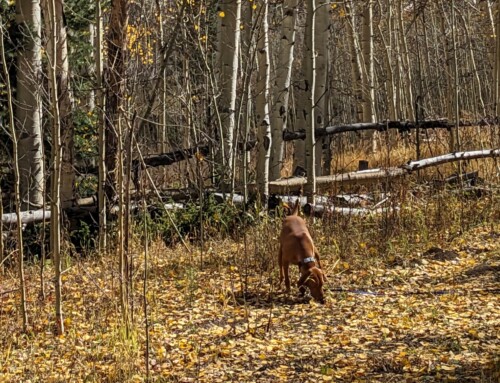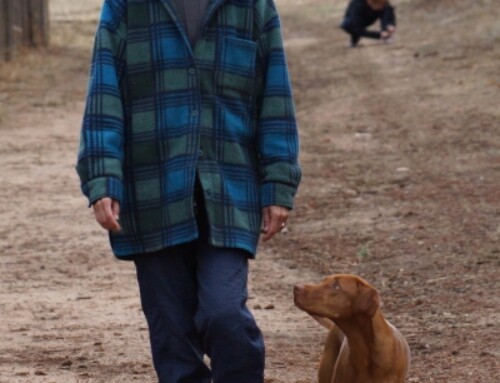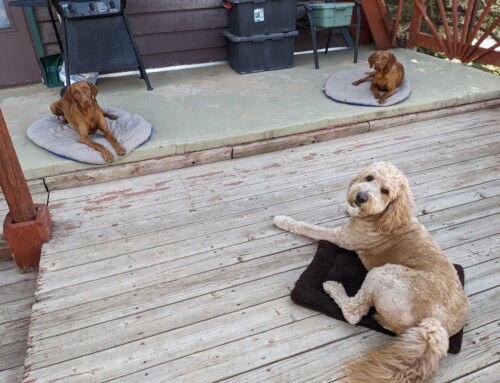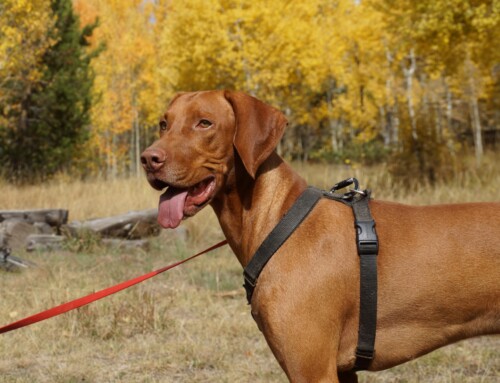DOG TRAINING OFFERED IN-PERSON AND ONLINEOur dog training services are delivered in almost any format that meets your needs. We have GROUP CLASSES at our indoor and outdoor facilities on our farm, ONLINE LIVE STREAMING classes, and SELF-PACED VIDEO-BASED training through our Online Dog Training Course. Our PRIVATE TRAININGS can be done in-home, outside, in public dog-friendly locations, at our facility on our farm, online via phone or video conferencing and through email. |
If you have a dog who barks and lunges at other dogs when on leash, you are not alone. In fact, it is one of the most common issues I work with in private training sessions. Most of my clients dealing with this issue feel somewhat isolated. They walk through their neighborhood and their neighbors avoid them or give them that look that seems to say “Can't you control your dog?!” It can be embarrassing, so my clients often avoid everyone else, sometimes to the point of walking at very odd times of the day.
The first thing I look at when helping clients with this issue is the connection between dog and handler on a walk before the other dog shows up. For more on this, see our blog post about it.
When we've looked at the connection between dog and handler and the leash manners prior to the other dog showing up, we take our next step. The question people ask is, “How do I stop my dog from lunging and barking?” While I understand the question and empathize with my clients, I tell them that they are really asking the wrong question. Understandably, they want to put an end to that behavior. If you've ever dealt with it, you know it is not so much fun to walk your dog if you are constantly on alert for another dog to show up. It's just too stressful! But the real question here really should be: “What do I want my dog TO DO instead?”
Unfortunately, many people (and many trainers too) are still focused on stopping a behavior. The problem with this is we are still focusing on that behavior. Even if we stop or suppress that behavior, we have to fill that void. Most people are not giving their dog the right information that the dog needs to be successful. If I just tell a dog to stop doing something, what happens? I have a void. What will the dog fill that void with? Possibly a new behavior we don't like any better. And the dog is much more likely to revert back to old behaviors when he can't figure out what to do, or the new behavior is not making him feel any better.
If we can focus on what we WANT from our dogs, and help them achieve this new behavior, it's much easier to get rid of the old behavior. The question then becomes, what is that new behavior? My clients usually say, “I don't care what he does as long as he stops lunging and barking!” The key to success here is figuring out some behaviors that your dog is capable of doing in that environment and that are incompatible with the unwanted behaviors. If we don't want lunging, we might ask for a sit or a change in direction (for my dogs, that's “this way!”) If your dog tends to fixate on the other dog, you might teach a “watch me” since he can't focus on you and the other dog at the same time. If your dog tends to bark, playing a find it game with treats on the ground will help redirect his mouth to doing something other than barking. If you can start to get your dog practicing a behavior that is incompatible with the old behavior, we will start to see success much sooner and it will be much more likely to stick.
There are plenty of options to choose from when it comes to alternative behaviors. We just need to figure out which ones will be the most successful with your particular dog in that particular setting. And then we need to make it worth his while to do it!
Our goal is to positively impact the lives of as many dogs and their families as we can, in part through our extensive library of video, infographics and text articles. 
|












